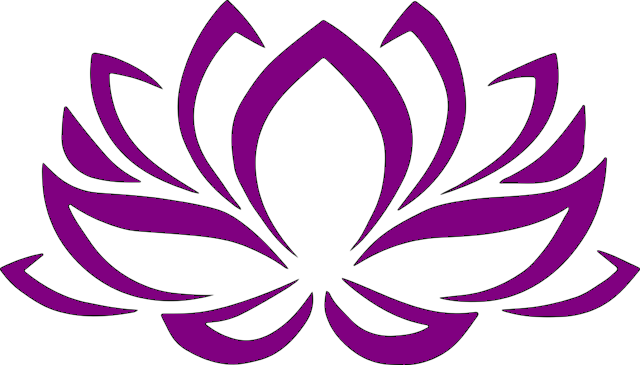-
Education: I found this article helpful in undrestanding the difference between Achilles tendinitis and Achilles tendinosis. This article helped me build intuition and understand the philosophy behind various treatment techniques.
A really good explanation of how 'collapsed arch' or weak muscles in the arch contribute to Achilles tendinitis. A collapsed arch is not the only contributory factor; altered hip mechanics or weak glutes could also contribute to Achilles tendinitis.
I also found this video and this video very helpful for general understanding of Achilles tendinitis.
- Patience: My recovery has been slow, like an upward sloping 'sawtooth curve'. In the past, I've recovered enough to start walking around at somewhat regular pace but very soon (within a few days), I would injure myself. So I now walk slowly, mindfully, patiently. Allowing nature to help me heal at its own pace. It might take me several more months to recover normal walking.
-
Icing: Very effective for inflammation, when I had significant pain at the back of my heel where the tendon inserts into the foot. When inflammation was high, nothing helped me except rest, icing and anti-inflammatory teas. Stretches were counter productive in the presence of inflammation.
For icing, ice cubes may be placed inside a small, plastic sandwich bag for rubbing on the inflamed area: see this video. My preferred solution is to place a large-sized cold pack in a freezer, then affix it to the inflamed area using a compression / wrap bandage for 20 minutes.
-
Foam Rolling: Quite effective. Foam rollers come in various shapes and sizes. I prefer a hard roller like Rumble Roller whose spikes get into tissues deeply. The Grid X Foam Roller is also pretty hard. For maximum hardness, one could try PVC Roller made of PVC, a hard plastic.
- For proper foam rolling technique, see this video (first 80 seconds). For a deeper massage, you can place one leg over the other and lift yourself using your arms: see first 140 seconds of this video.
- Another idea is to sit in Vajrasana with a foam roller below your butts. Vajrasana is a Yoga pose, known as Thunderbolt Pose in English.
-
Stretches:
 There are two different muscles to stretch: the gastrocnemius and the soleus.
There are two different muscles to stretch: the gastrocnemius and the soleus.
Gastrocnemius stretches: see this video (knee is straight) and this video which suggests placing a towel below the foot for a deeper stretch.
Soleus stretches:
- Most popular soleus stretch: supported by wall, with knee bent.
- Gentle stretch using a towel in a seated position.
- Downward dog pose with bent knee.
- Deep, seated stretch: see this video and the end of this video.
- Ankle mobility exercises: Described here (PDF). These exercises improve muscles for four movements: plantarflexion, dorsiflexion, inversion and eversion. My physical therapist gave me these exercises early on for strengthening the foot.
-
Eccentric calf exercises: A really important exercise discovered by Alfredson et al. Described in this research paper from 1998. A followup study demonstrated its effectiveness even 5 years after the patients learnt of these exercises. See this paper from 2012.
Three variations of the eccentric calf exercises are described in this booklet.
- Phase I: Stretching.
- Phase II: Tiptoes with weight shifting and Unilateral tiptoes.
-
Phase III: Heel drops with straight knee and Heel drops with bent knee.
See these videos for proper form: heel drops with straight knee and heel drops with bent knee.
Advanced patients may do the above exercises with weight in a backpack. See this video for instructions.
-
Yoga: My general understanding is that Achilles tendinitis is caused when the Achilles tendon is overworked, which could be caused due to many different factors: collapsed arch, tightness in calves, altered hip mechanics, weak glutes, and so on. For example, this video explains how 'collapsed arch' or weak arch muscles in the foot could contribute to Achilles tendinitis. This article in RunnersWorld explains that runners with Achilles tendinitis have greater hip instability (it's not clear whether tendinitis resulted in hip instability or vice versa). This article explains the relationship of Achilles tendinitis with weak glutes.
My impression is that almost all treatments for Achilles tendinitis are focused on its symptoms, not the root cause. After reading all the articles above, I feel that intead of attempting to fix Achilles tendinitis with a localized treatment (to the point of attachment or along the tendon or in the calf muscles), it would be best for me to adopt an 'overall body exercise system' like Yoga to keep all of my muscles strong and flexible.
Yoga exercises are numerous. Viparita Karani (Legs Up The Wall Pose) is great for stretching the hamstrings and the calf muscles; we may flex the ankle towards for a deeper stretch.
-
Glute Strengthening: Greg Finney at Sports Medicine Institute highly recommended glute exercises, especially the squat. See Dr Jordan Metzel's exercises — don't do the 'Plyometric Jump Squat', just the simple squat with hands outstretched in front of you. For many more glute exercises, see this article.
A bodybuilding friend told me that we should exercise our glutes once every two days so that they get a chance to recover. After glute strenghening, it's best to do some glute stretches or glute foam rolling.
-
Mobility Band exercises: this article (PDF) and this video by Kelly Starrett, author of Becoming a Supple Leopard (480 pages, 2015). Quick notes:
- Tie the Mobility Band rather snugly. The band may be tied only to the bottom of the leg, above the heel, where the tendon inserts into the heel bone. Or the band may be tied both below and above the heel, thereby covering the entire ankle.
- Dorsiflexion and plantarflexion movements (with the foot bent as much as possible) for about 30 seconds.
- Move into downward dog pose in Yoga. For 30 seconds, alternate between full downward dog (knee is straight, heel touching the ground) and its variation (knee is bent, heel is lifted off the ground) slowly.
- Natural anti-inflammatories: According to Dr Greger, the top 4 anti-inflammatory spices are cloves, ginger, rosemary and turmeric. Other websites list additional spices and teas with anti-inflammatory ingredients. For myself, I created a mixture of curcumin (turmeric), black pepper, clove powder, ginger powder, rosemary powder and ceylon cinnamon. I also invested in Boswellia capsules.
- Graston technique: See this video. Graston devices are a variation of Gua Sha massage tools from China. These tools are great at removing adhesions along the tendon.
- Active Ralease Therapy (ART): Official website. See this video and this video for Achilles tendinitis recovery. Find a Physical Therapist (using Yelp, for example) who also administers Active Release Therapy. Manual Adhesion Release and ASTYM are two other technique for soft tissue recovery. I haven't tried ART yet.
- Rapid Release Technique: Uses a powered instrument to break down adhesions. See this video and this video. I haven't tried this technique.
- Self Massage: See the first 103 seconds of this video for self massage using forefinger and thumb. Another technique using both thumbs. Another video showing a therapist doing a massage.
-
Foot baths:
- Foot bath with epsom salt is helpful.
- A mixture of bentonite clay, epsom salt and apple cider vinegar may also be used.
- In this video, Andreas Moritz advocates bentonite clay and also urine! Andreas Moritz has written several books on natural healing.
I haven't tried a foot bath yet.
-
Poultice with herbal mixture: Many cultures prepare a mixture of herbs and oils (sometimes heated) to increase blood supply and promote healing. Such mixtures are topically applied to the affected area (the heel in the case of Achilles tendinitis), covered with cloth or bandage and allowed to remain overnight. I haven't found a reliable recipe yet. Some website recommended a paste made of lavendar oil and turmeric, to be applied to the heel at night.
-
Chinese medicine offers the Bone Spur Trio: here and here for treating bone spurs, which commonly co-occur with Achilles tendinitis. This trio consists of 701 Plaster, Osteophyte Soak and Osteophyte Capsules. Osteophyte Powder is explained here.
I haven't tried these preparations yet.
-
An Indian friend suggested this recipe for a 'healing paste':
I haven't tried the above healing paste myself.
-
Chinese medicine offers the Bone Spur Trio: here and here for treating bone spurs, which commonly co-occur with Achilles tendinitis. This trio consists of 701 Plaster, Osteophyte Soak and Osteophyte Capsules. Osteophyte Powder is explained here.
- Anti-inflammatory oils: Application of castor oil and coconut oil is recommended by some websites. I did apply coconut oil to my heels occasionally; not sure if it was helpful.
-
Heel lifts: Heel lifts are recommended for the short term if Achilles heel pain is significant. However, heel lifts encourage the calf muscles to remain in a contracted position. So heel lifts should not be used as a long term measure. A good video that compares various options for insoles for increasing height, including heel lifts.
An alternative to heel lift inserts are heel lift socks! Another heel lift sock.
I never tried heel lifts or heel lift socks.
-
Barefoot shoes: Vibram Five Fingers popularized barefoot / minimalist shoes. Do they help Achilles tendinitis? Some websites recommend wearing barefoot shoes because regular shoes don't let our feet bear load naturally, resulting in muscle imbalances. With barefoot shoes, load distribution is more uniform, not localized on heels. However, if you have collapsed or weak arches, then barefoot shoes are not recommended for city walking where all surfaces are hard and flat. Barefoot shoes are great for walking in the outdoors, in the woods, where surfaces are softer and uneven. Some websites suggest that arches strengthen with barefoot shoes; some websites say completely the opposite, especially if arches are already weak.
My approach? Use barefoot shoes like Vibram Five Fingers when walking in the woods. Use sandals with arch support (Olikai sandals at REI, for example) otherwise.
Ideas which helped me the most are education, icing, rest, reduced load, foam rolling, stretches, anti-inflammatory teas, and exercises (ankle mobility exercises, eccentric calf exercises, yoga and glute exercises).

